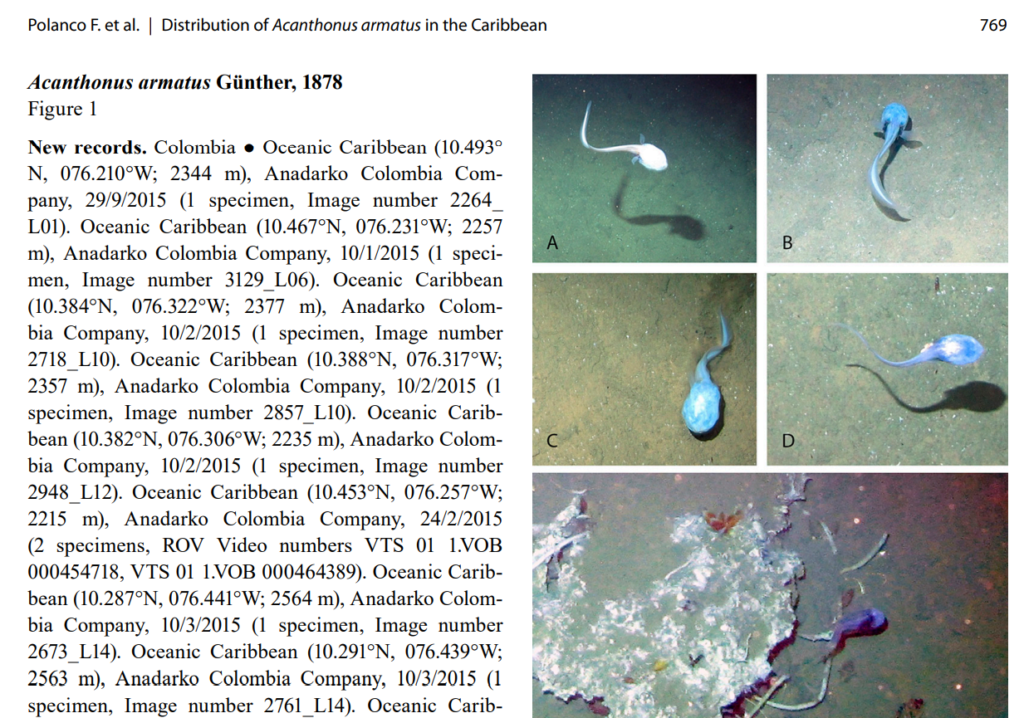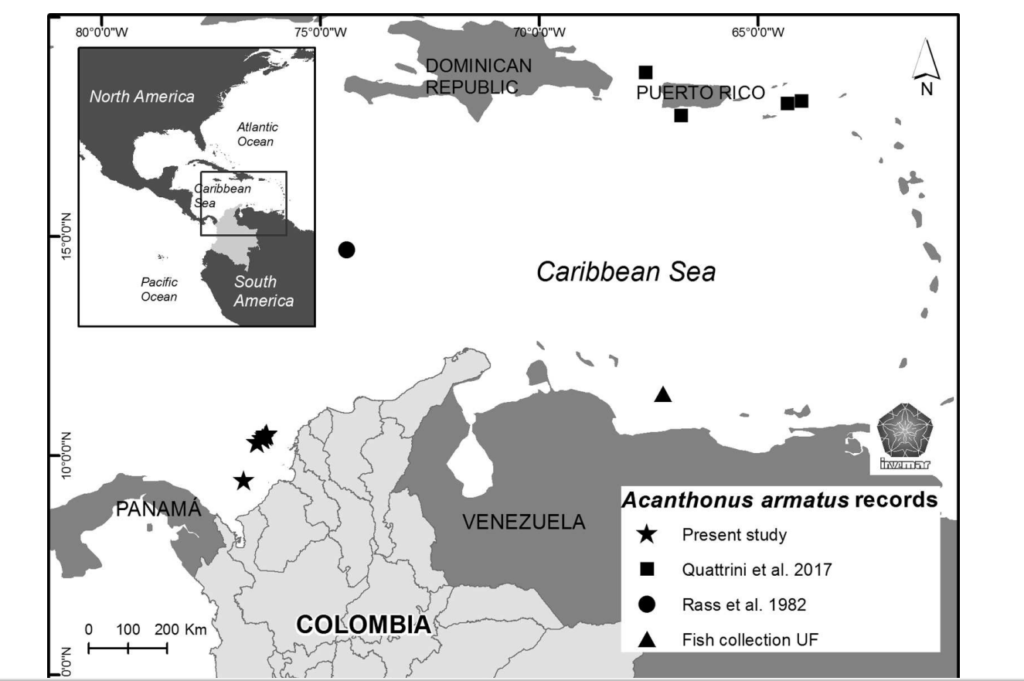Assfish News
The readers of my blog might remember a previous blog post about the Assfish, to be precise the Bony-Eared Assfish:
What are the reasons to be interested in the Assfishes?
1. The bony-eared Assfish has the smallest brain weight to body weight ratio of any vertebrate. Yes, one can use this as the basis for immature jokes about the fish being stupid, but it’s in fact very interesting that such a small brain/bodyweight ratio occurs in a fish which lives in an ecosystem which is poor in sensory stimuli (almost no light!) and thinly inhabited. There is a very interesting link between ecology and neuroscience here. This is how the assfish first caught my eye.
2. The deep sea fauna of the planet’s oceans is fascinating, and still not very well documented. Every new find shines new light on this alien world, separated from us by kilometers of water.
3. Yes, the name is funny. Half ass, half fish? Assfish? Who came up with that? Haha.
Assfish News
So, there are two new papers about the assfishes I’d like to introduce you to.
In a study by Andrea Polanco and colleagues from the Museo de Historia Natural Marina de Colombia, the authors report that they found new individuals of the bony-eared assfish in regions of the Caribbean where the species was so far not yet known.
Below are some images the author shot of assfishes, with an ROV (remote operated vehicle, a remote-controlled mini-submarine on a tether). The images wer all taken at depths between 2215 m and 2564 m. This is an area almost completely devoid of light, with a sparse fauna, and almost no primary productivity. A lot of the nutrients in this area trickle down from above. This part of the deep ocean is called the bathypelagic zone.

So, where were the new assfish found? In the SW Caribbean, off the Colombian coast. The map below shows where previous studies had found the species, and where this one (star symbol) found it. The fish is was known from several tropical and subtropical areas of the world, of the Indo-Pacific, too, but this area was new.

And, a paper by Shinichi Tomiyama and colleagues reports that they found a new deepwater assfish, Bassozetus mozambiquensis in the western Indian Ocean. The fish was described based on a single specimen, and it was initially thought to belong to the species Bassozetus compressus, but was found to be different, based on a combination of physical characteristics such as fin rays, number of vertebrae and lateral spines. This is what fish taxonomists often go by. Interestingly the fish is not listed yet on fishbase among the cusk eels, to which the assfishes belong.
The fish was found in a bottom trawl, conducted between 500 and 1600 m, which is quite a depth range.
Newly described fish species are not that rare, but they are common when sampling at such great depths.
The Papers:
Polanco, A., Dueñas, L. F., Leon, J., & Puentes, V. (2019). New records and update on the geographic distribution of the Bonyeared Assfish, Acanthonus armatus Günther, 1878 (Ophidiidae, Neobythitinae), in the Caribbean region. Check List, 15(5).
Tomiyama, S., Takami, M., & Fukui, A. (2017). A new deepwater assfish, Bassozetus mozambiquensis sp. nov.(Ophidiiformes: Ophidiidae), from the western Indian Ocean. Ichthyological research, 64(1), 13-17.